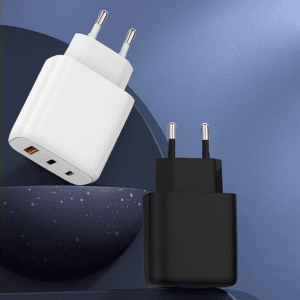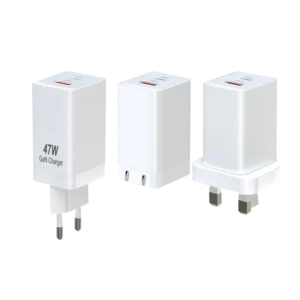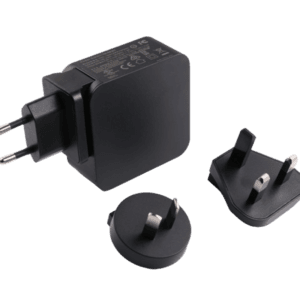USB PD PPS stands for Universal Serial Bus Power Delivery Programmable Power Supply. PPS is a type of PD power mode that allows the voltage of the output to dynamically change in steps.
Unlike traditional USB PD which provides a range of fixed output voltages to choose from, USB PPS allows the voltage to be set in 20mV increments (0.02 volts). This allows for much greater power delivery flexibility. USB PD can also regulate current in steps of 50 milliamps (0.05 Amps).
What Is USB Power Delivery?
| Mode | Voltage levels | Max current | Max power | What it’s for / notes |
| Standard Power Range (SPR) | 5 V, 9 V, 12 V, 15 V, 20 V | Up to 5 A | Up to 100 W (20 V × 5 A) | Core USB-PD spec; widely supported by phones, trigger modules, and regulators. |
| Extended Power Range (EPR) | Adds 28 V, 36 V, 48 V (plus SPR levels) | Up to 5 A | Up to 240 W | High-power USB-C; opens use cases like charging e-bike batteries. |
| Programmable Power Supply (PPS) | Variable, adjusted in real time as requested by the device | Variable (regulated dynamically) | Device/charger-dependent | Acts like a bench supply/CC buck: negotiates voltage to control current; improves charge speed and battery longevity by reducing work/heat in the device’s regulator. |
USB PD is a fast charging and power negotiation standard that is used over a physical USB C connection. It allows a USB cable to supply much higher power than the standard USB protocol allows for. There are several power modes for USB PD, so let’s break them down.
Standard Power Supply (SPR)
This is your standard USB PD spec, which covers 5V, 9V, 12V, 15V, and 20V. 100W is possible when using 20V at 5 Amps. Almost all of the USB PD regulators, trigger modules, and smart phones cover these voltages ranges.
Extended Power Range (EPR)
This power mode can support up to 240W, as it supports the voltages mentioned above in addition to 28V, 36V, and 48V at up to 5 Amps. That’s a lot of power for USB, and in this mode, we could start considering using USB to charge e-bike batteries.
Programmable Power Supply (PPS)
This mode is the most advanced PD spec so far. PPS allows the voltage to be changed in real time to control current in the same way a bench power supply or constant current buck converter does.
USB PPS allows the voltage to be changed in real time, as requested by the device. This makes it so your phone can request exactly how much energy it needs from the charger. That makes the phone’s built-in regulator have to do much less work. It means that with USB PPS, your phone battery will charge faster and have a longer lifespan.
How To Understand USB PD PPS Profiles
For example, if you have a USB PD PPS charger that offers a 3.3 to 11.0 V PPS profile at up to 3 Amps, a phone could request 8.84 V and 2.25 A which would match its needs using those 20 mV / 50 mA steps.
In another example, a USB PPS charger that says it can support 3.3 to 21.0 V at up to 5 A, a laptop could ask for 15.60 V and 4.35 A to get 68 W from the charger. The laptop can then fine-tune the voltage as the temperature of the battery state changes, keeping charging fast, efficient, and reliable.
Do USB PD PPS Chargers Require a USB PD PPS Device?
No. PPS support is optional in both directions. There are plenty of chargers that have PPS support that are charged by non-PPS power supplies. On the other hand, a PPS power supply can charge a phone that only has USB PD support. When PPS isn’t available the device or charger simply falls back to fixed output voltages like 9 V or 12 V.
Not only are USB PD PPS power supplies compatible with USB PD devices, but both USB PD PPS and USB PD chargers are compatible with standard 5 Volt USB.
So, What Is USB PPS?
USB PD PPS makes USB-C fast charging smarter. Instead of picking from one of several fixed voltages, PPS enables the device and charger to negotiate the amount of power that is delivered in a fine-tuned manner. USP PPS can adjust the voltage and current by 20 mV and 50 mA steps respectively. This makes USB PD PPS more like a bench power supply.
Practically, it means that with USB PD PPS, you will have a faster, cooler, and more efficient charging with less stress on the device’s internal regulators. USB PPS is the precision layer that adapts to real-time needs, whether that’s a phone that needs just 8.84 V at 2.25 A or a laptop that requires 15.60 V at 4.35 A.




